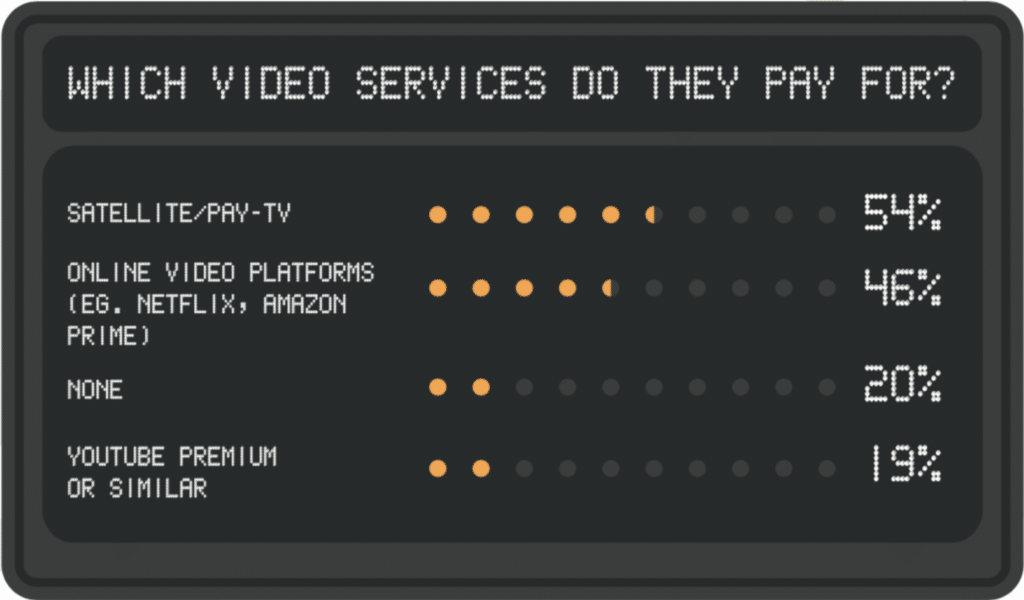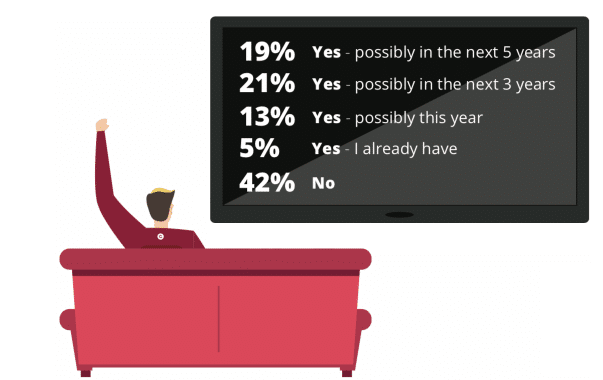
The Grabyo 2019 Sports Video Trends Report is here!
This week we released our 2019 Sports Video Trends Report, here are some key findings.
Earlier this year, we asked 9690 people from across the UK, United States, France, Italy, Germany, Spain, and Australia about their video consumption habits.
We looked at which types of content people are watching, which devices and platforms they’re using, and how they expect to watch sports in the future.
We found 53% of global consumers watch sport on a regular basis. Of this group of sports fans, 45% watch it more often than any anything else.
This group of sports fanatics represents 170 million avid sports fans in the countries covered within our study.
In our Sports Video Trends Report, we explore how these consumers are changing the sports video industry.

Pay-TV is still top
We found that the dominance of pay-TV providers in the media rights market has slowed cord-cutting in sports fans. Pay-TV broadcasters commit huge sums to acquire the most valuable sports rights and use exclusive access as a driver of subscriptions. The report showed that sports fans want to watch on the big screen and as a result, almost half of sports fanatics pay for TV services. Many use it most often to watch video.

However, our data suggests sports fans are ready to switch to streaming.
65% of die-hard sports fans use a smartphone most often to watch video. 53% use laptops/desktops to watch most often. Only 40% watch sport most frequently on TV.
Almost 25% reported watching video on social media more often than pay-TV. 1 in 5 sports fanatics visits social media with the intent to watch video every time.
Sports fans are looking at other media services, available across a range of devices and platforms, and see more flexibility than is available in sports.
Social media platforms are growing their portfolio of live rights, such as Facebook’s deal with MLB and WWE in America. These platforms also allow fans to access real-time clips, extended highlights and other video from athletes, leagues, or clubs.

Digital platforms are catching up
The appetite for ancillary content has risen sharply; behind the scenes footage, live mobile streaming, user-generated videos and much more mobile and social video clips are available anytime on a range of mobile devices.
The majority of fans want to watch live sports on a big screen. Right now, that brings a big advantage to broadcasters who are the primary distribution channel to the big screen. This is beginning to change. Smart TVs, IP streaming boxes, connected dongles (Chromecast, Amazon Fire TV), casting from mobile and even the option to access OTT services such as Netflix from traditional set-top-boxes has brought online streaming to the big screen. The hegemony of linear broadcasting will not last forever.

Tech giants such as Amazon Prime have started to enter the live rights market, but we will not know if a new entrant can compete until we see a major domestic sports rights portfolio moves to a streaming provider.
Online platforms like DAZN are moving towards this goal, while broadcasters are beginning to launch pureplay OTT services such as GolfTV from Discovery.
The future is coming
While 42% of sports fans aren’t planning to cut the cord in the near future, it’s clear that their priorities have changed. Price remains a key factor, and convenience and flexibility have become more important than ever. The race to be the Netflix of sports is on.
Read more in our 2019 Sports Video Trends Report here.
Related blogs
Stay in touch.
Join over 10,000 media professionals and register to receive our monthly newsletter directly to your inbox!

















































